
Calcium cabonate, vinegar
material experiment
Biorock
2020
2020 Graduation project in KABK
Introduction
Geomimicry
Inspired by nature, Erco Lai is researching materials and trying to create processes by mimicking nature, precisely, geographic mimicking, which could radically change the way we make objects or try to challenge the mainstream manufacturing system, by "growing" things like Earth. While studying geomorphology, he was fascinated by natural processes like dripping by gravity, decomposing by rain, evaporating by the sun, and shaping by the wind; by studying minerals, petrification, crystallization to accretion are the promising processes. The experimental material/process research expands the possibility of future production.

Electrolysis

Crystallization

Sedimentation
About
Electrolysis
"Biorock" is a technique that help to grow artificial coral reefs faster by electro-accumulation, and create steady infrastructure from conductive materials, such as steel, also electro-fields to protect from environmental stress, developed by Wolf Hilbertz in 1979. Limescale is a hard chalky deposit formed in kettles, pipes and boilers. Inside the design of a boiler, is a sacrificial anode rod to help capture the minerals during the process. The both processes are basically the same: the calcium ions within proper condition form a stony substance.
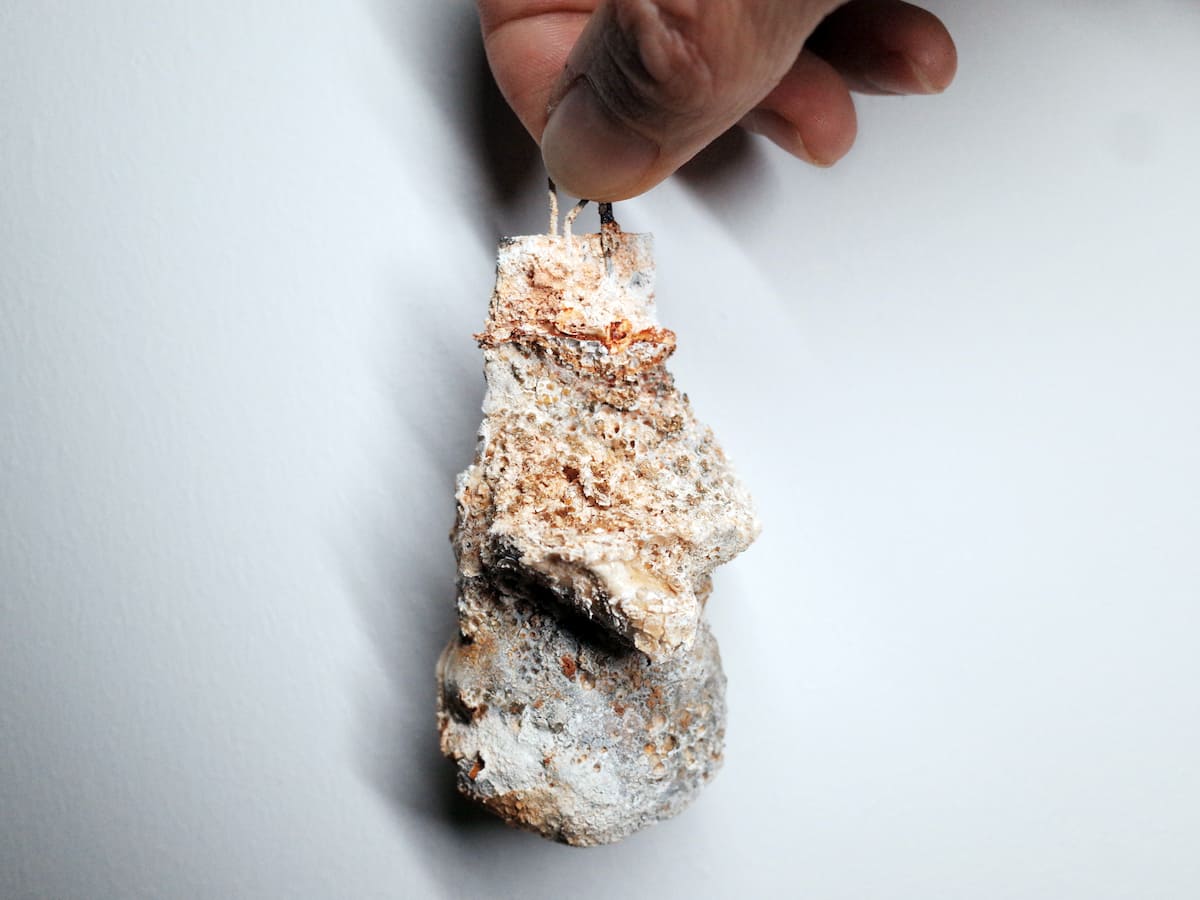
Process
Setting up
Erco Lai started to duplicate the process of "Biorock" in a simplified setting: Firstly, he collected the seawater at Zuiderstrand, Den Haag. Then, He used a glass cup as the container for the electrolysis and two 1.5v batteries (connected in series) as power-source. The result was so minimal that it was hard to see. However, there was a nuance that can prove that the idea of this setting is working. From the experience using the cup of seawater, he realized there are limited elements in a cup of seawater compared to the ocean where coral reefs grow. There, resources are basically flowing infinitive. To enlarge the result in his setting in the limited volume of seawater, he needed extra ingredients. Coral reefs use mostly calcium of the sea to grow so the ingredient he need is something containing calcium, like seashells, limestone or vitamin.

Preparation
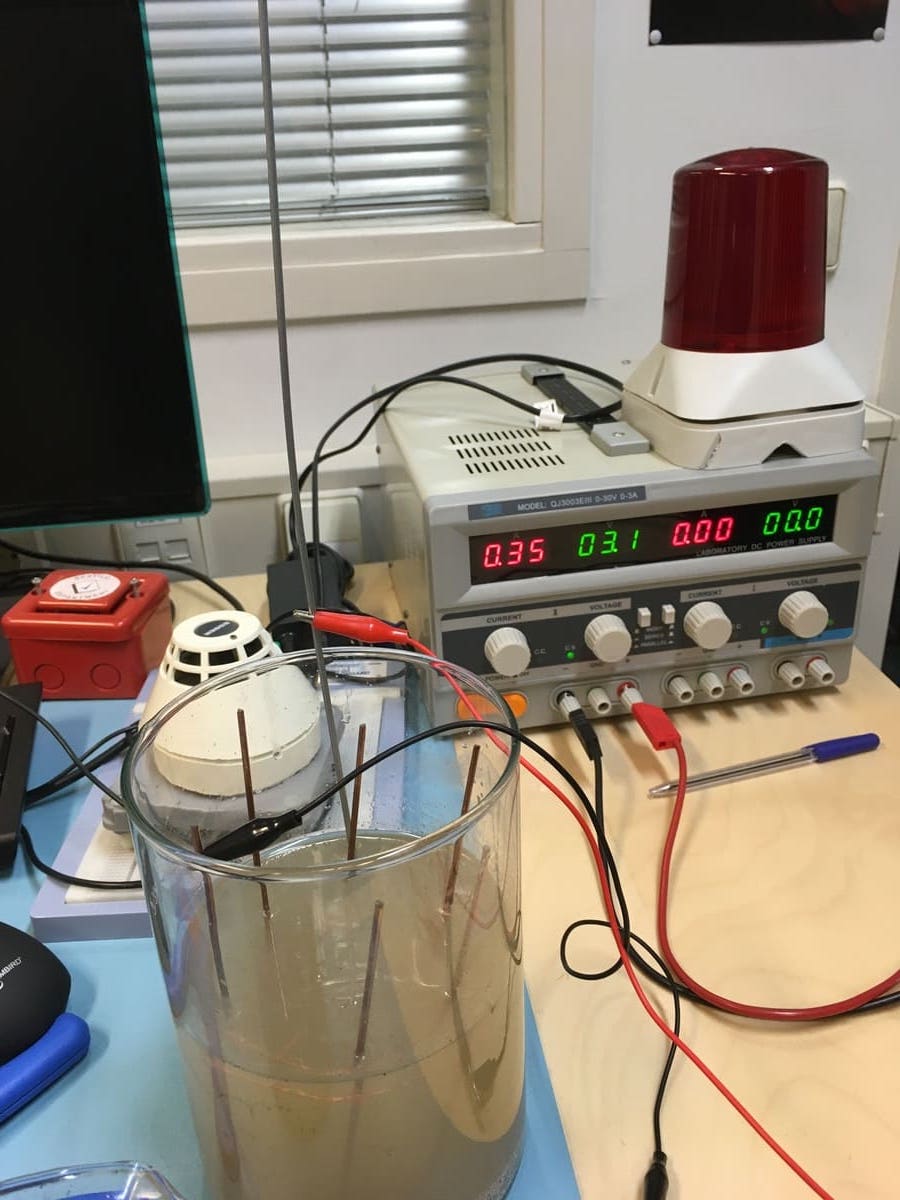
DC power supply
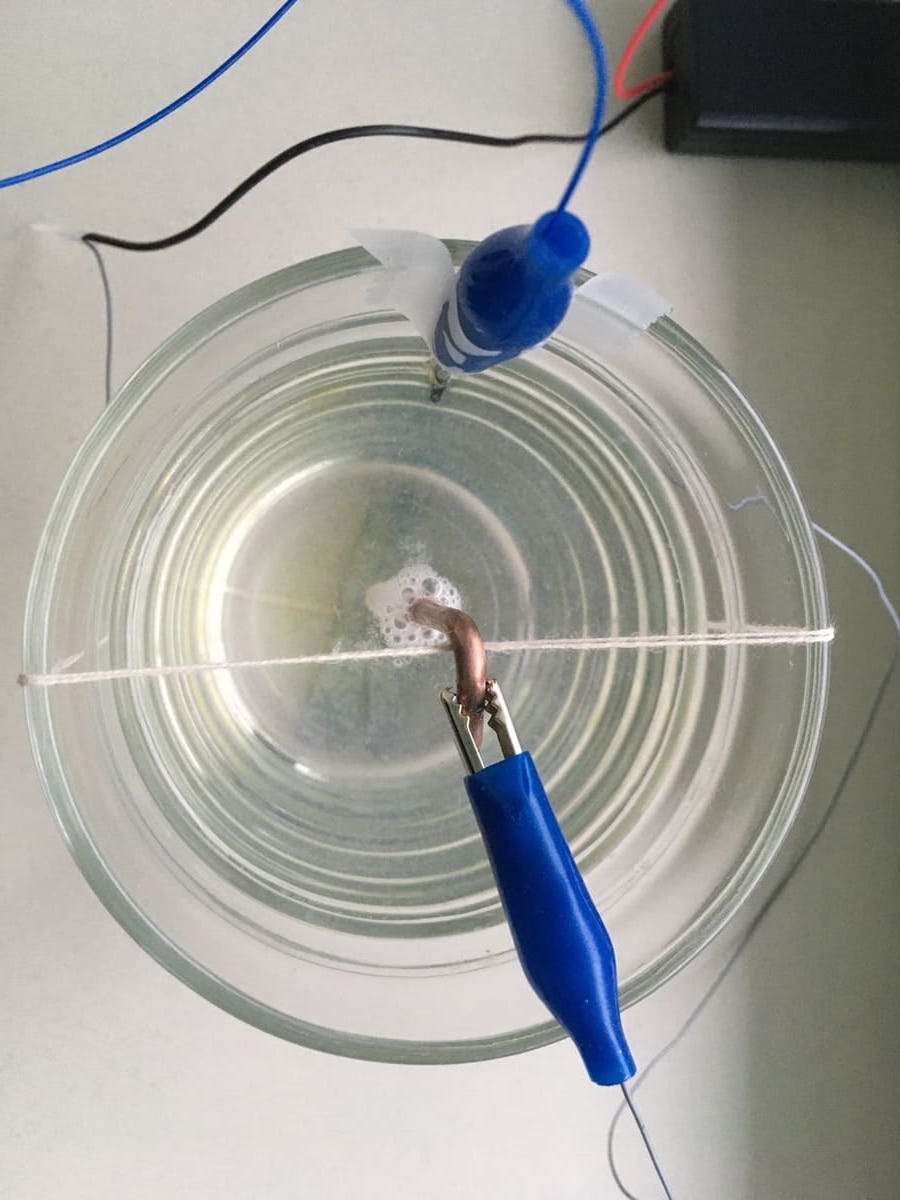
Sea water
Reflection
Electroforming
In the industries, the difference between electroplating and electroforming is if the deposited material remains on the cathode or not. Based on the experiment, he will elaborate on the idea of electroforming: In his definition, the main difference between electroplating and electroforming is thickness. By this definition, electroplating is a thin, even layer of mineral on the object/surface, and the mineral coating's shape is roughly the object's shape; electroforming is growing a thicker mineral layer and forming a new shape on the object. Interestingly, the electric field intensity affects the shape of the mineral accretion layer. Thus, the result of electroforming can be regarded as the 'freezing' of an object's electric field. Therefore, if a computer can simulate the electric field from an object's shape and power supply, he should be able to predict the shape of electroforming, if, in a further stage, he can control the electric field in some way and he can control the form.

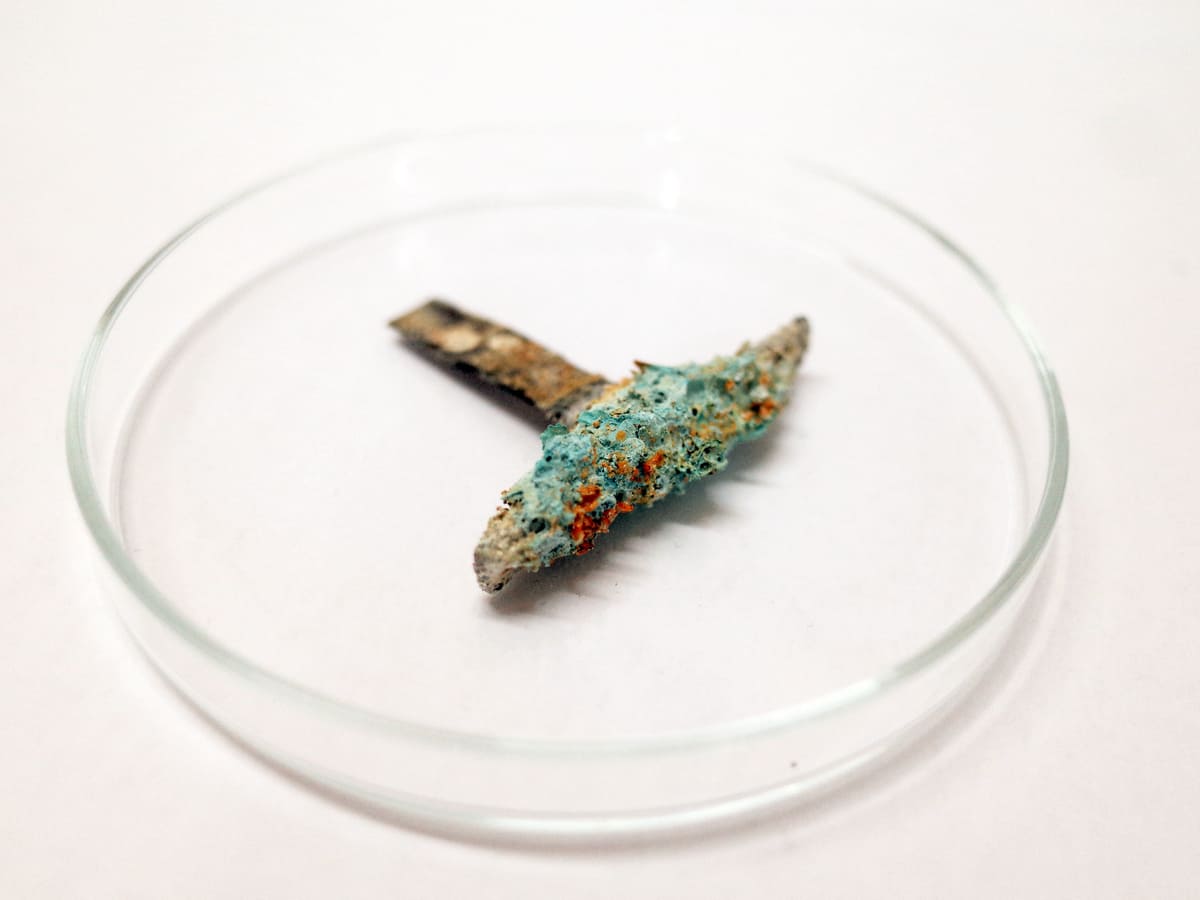
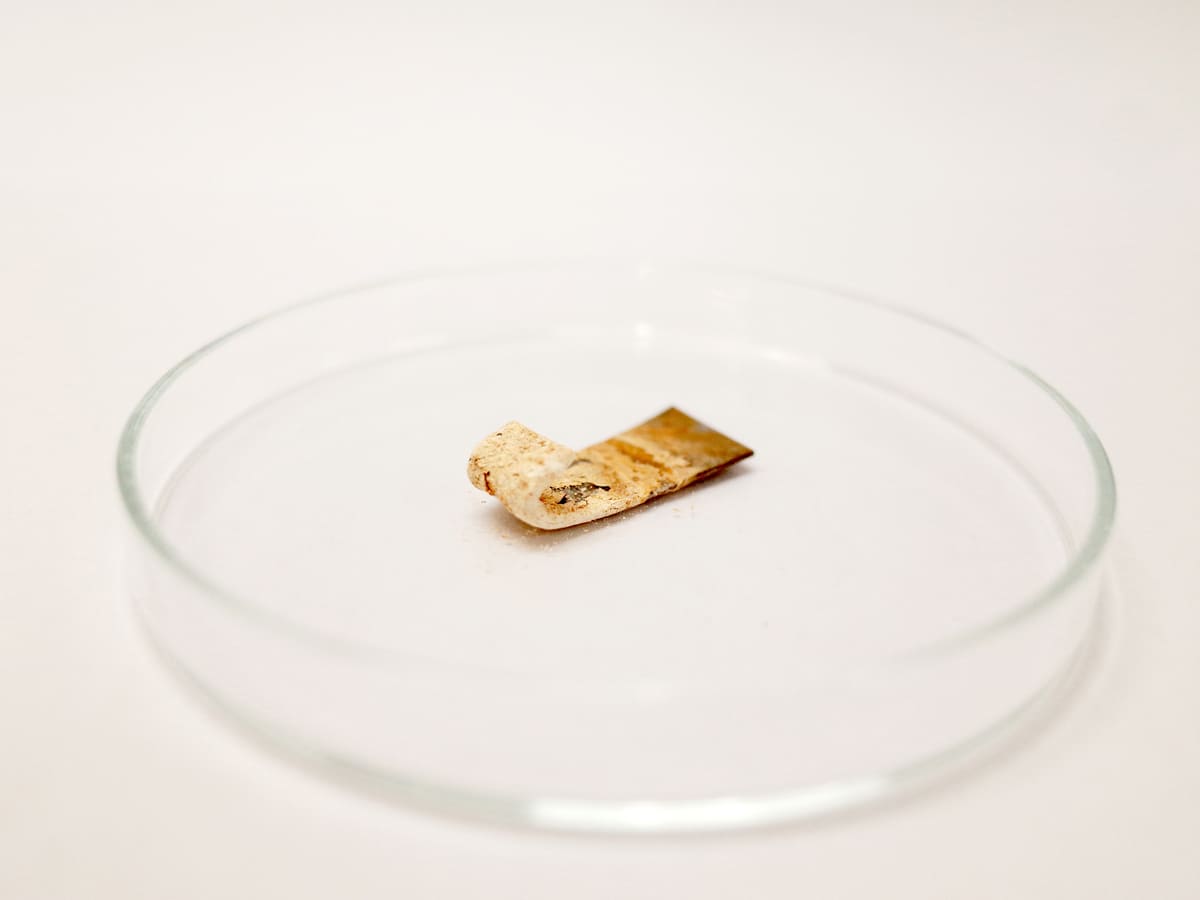
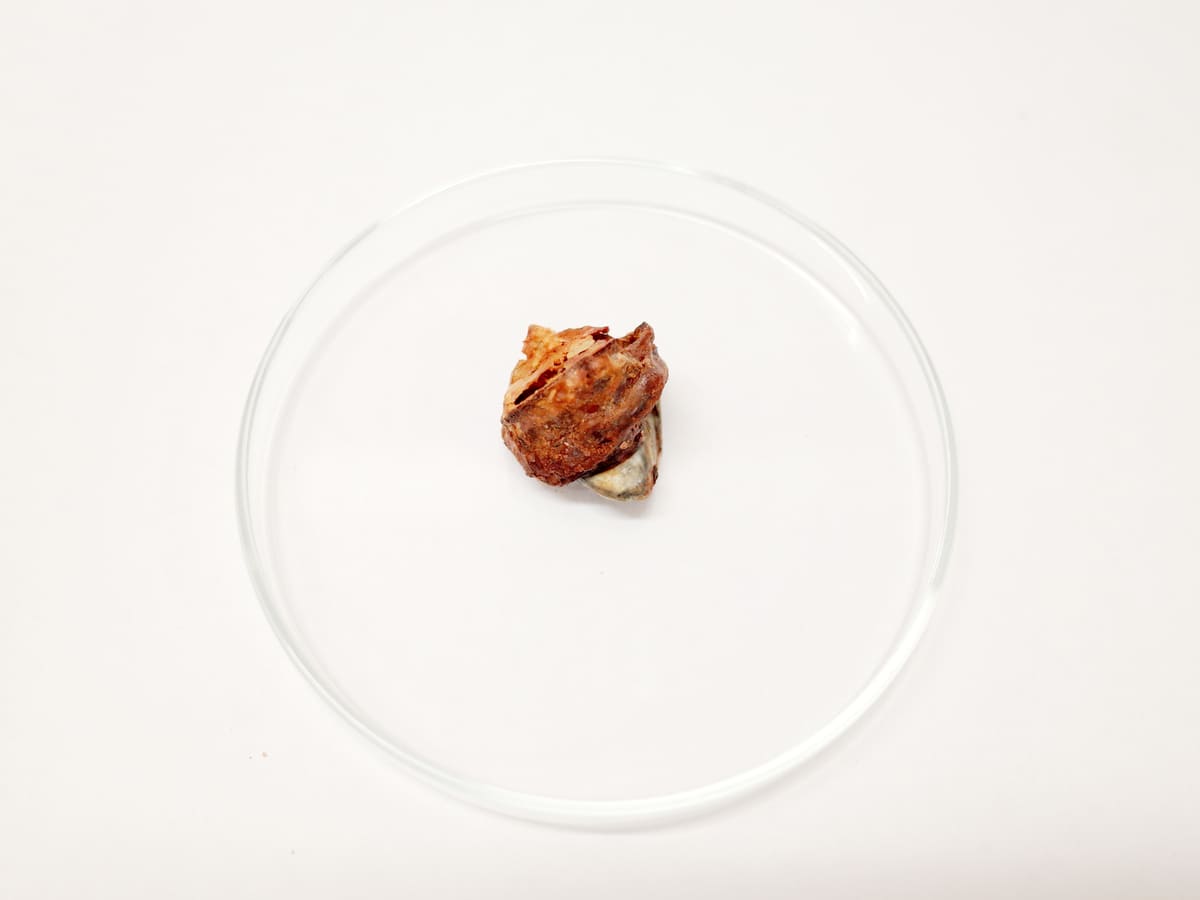
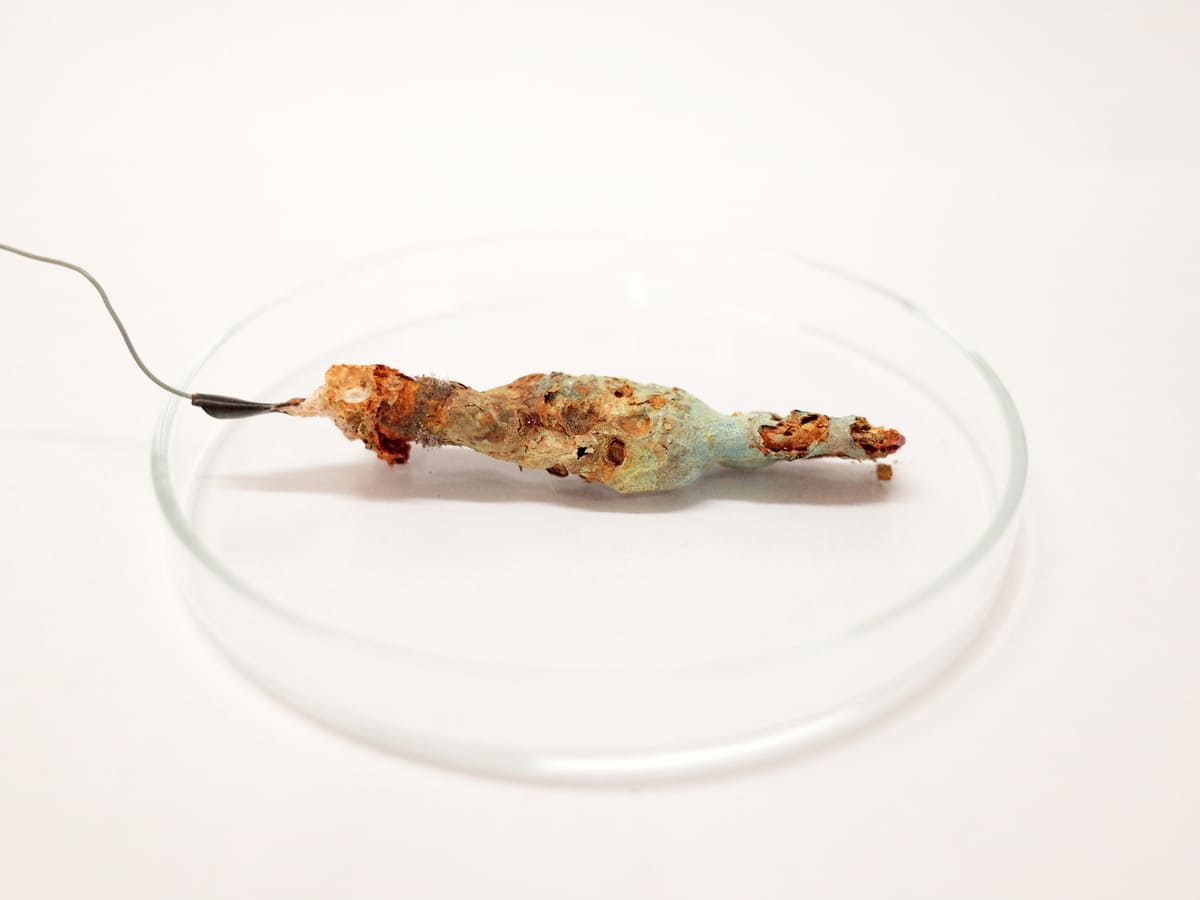
Speculation
Island making
After the electroplating/electroforming experiment, he proposes to work with Earth in two steps: phase I, observing the geo-process and recurring the process as a practice in a simplified setting; phase II, finding the connections between geo-process and human-process, and using it to include the Earth in the manufacturing process. For instance, within my experiment, phase I is setting up an electroplating factory in an urban area as the way of duplicating Nature; phase II is setting the manufacturing process on the ocean as the idea of outsourcing to Nature. By using the idea of outsourcing, we can regard Earth as our manufacturing partner.
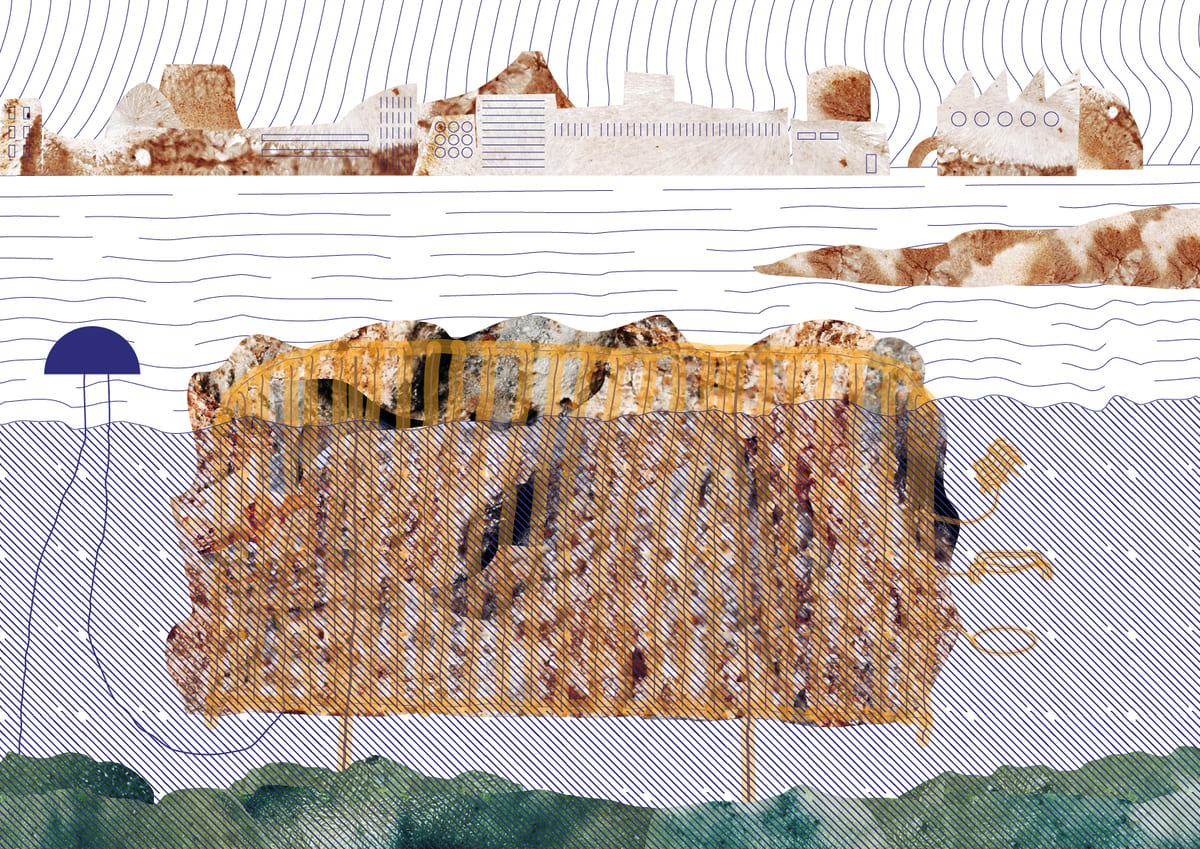
Speculation
Neo scholar's stones
Today's metal hardware is tomorrow's sculpture. Scholar's stone is the natural limestone from lakes. Due to its unique shape, people will regard it as a sculpture and a symbol connecting nature and human. As for his approach, Erco imagines what metal hardware-the archetype of mainstream making system- can be within the process. Furthermore, this new hybrid object can represent the next phase of industrial system, growing objects like minerals.
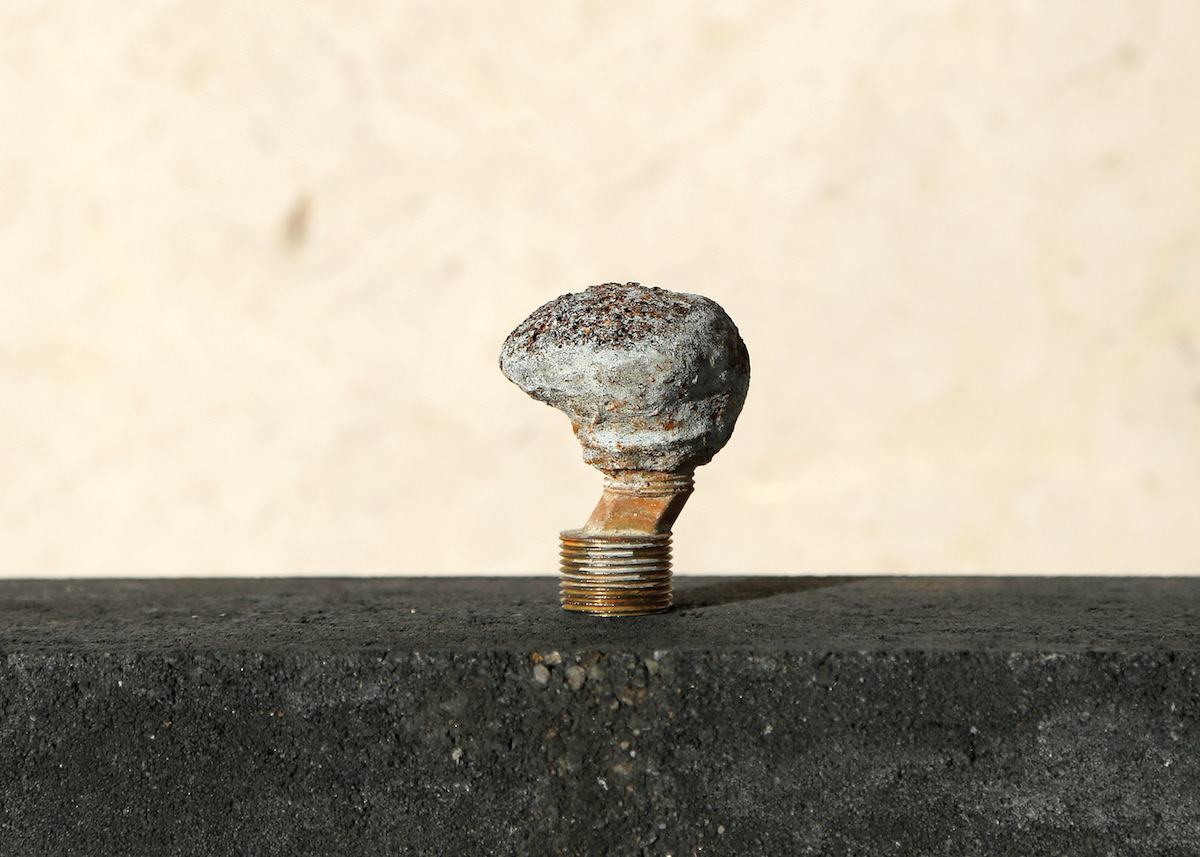
Exhibition
Design Research, KABK
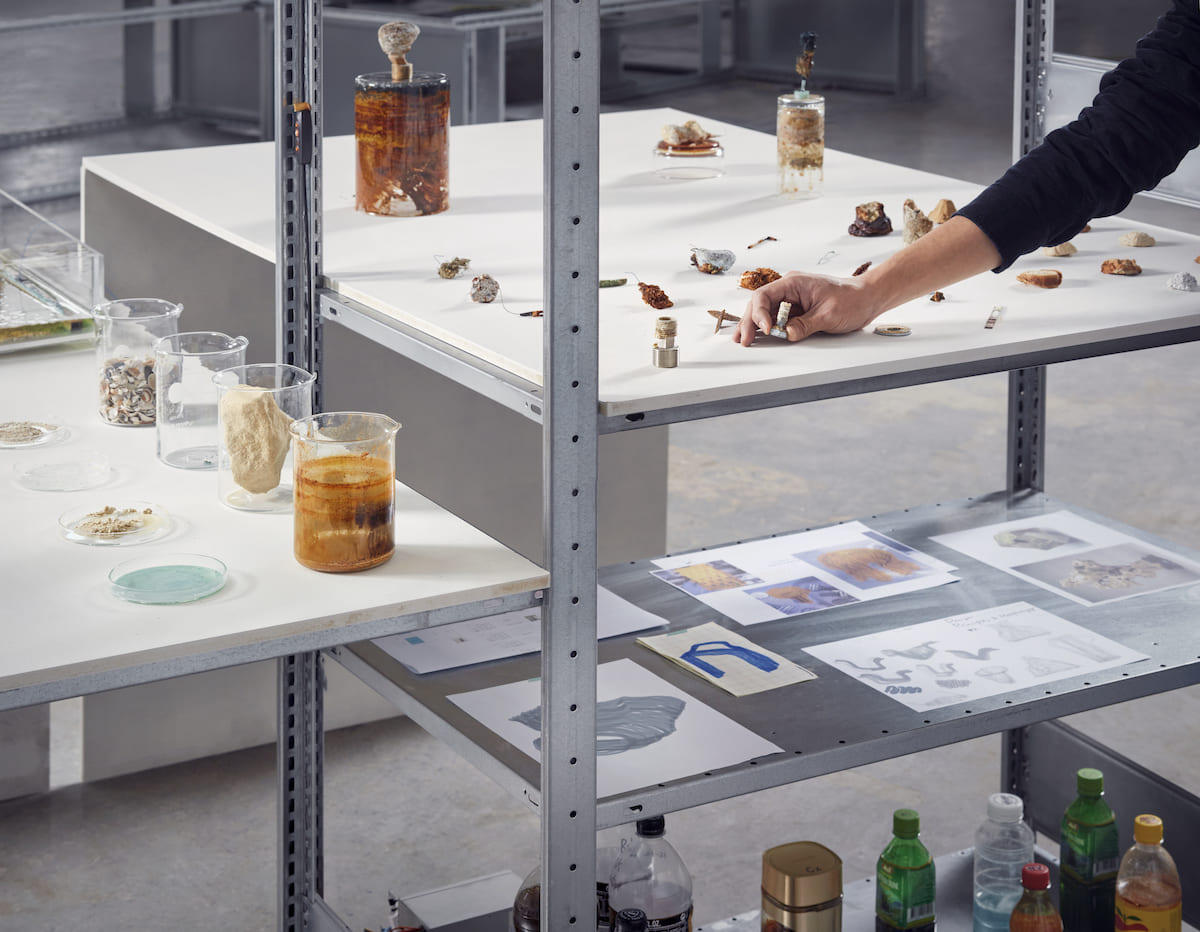
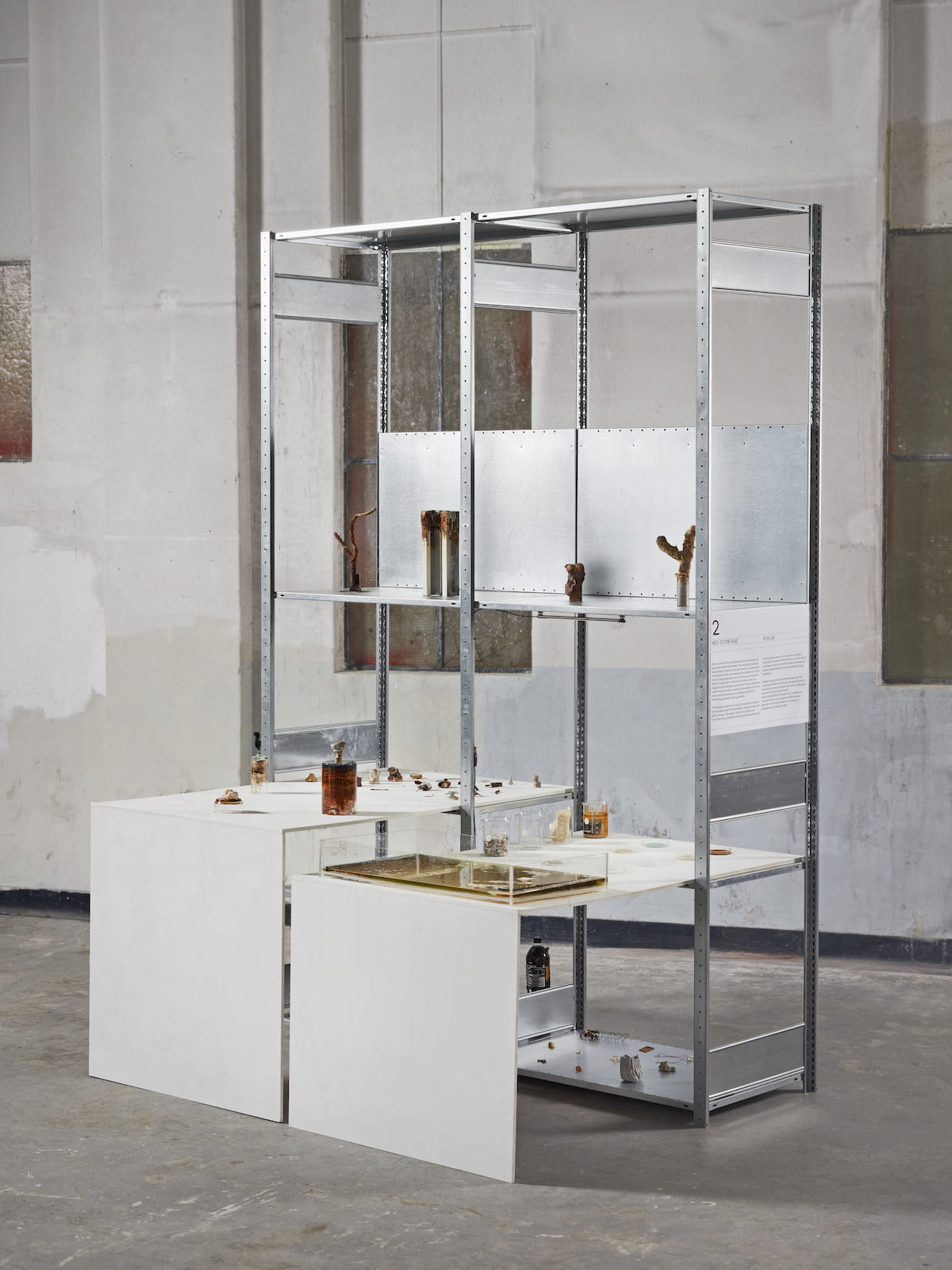
Further reading
Research document
- Full document of the project
Mineral formation#1 - Crystallization
- Prestudy of crystallization
Mineral formation#2 - Accretion
- More about electrolysis
Neo Stone Age
- The next chapter of the design research